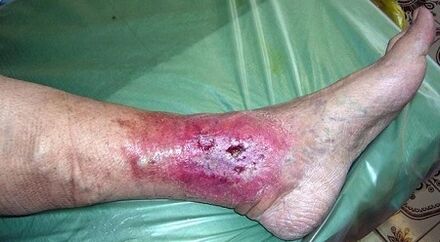Varicocele in the lower limbs is an extremely urgent issue of modernity.To figure out why the disease develops and how it can be cured, it is necessary to recall the anatomical features of the structure of the circulatory system.
What are varicose veins on the surface veins?
The main task of the leg venous system is to deliver blood from the bottom.To do this, there are valves in the veins - they carry blood from the legs to the heart.
Furthermore, for appropriate functions, blood vessels are divided into 3 groups:
- shallow.They are located near the skin and are most commonly seen in varicose veins.
- Deep.This set of blood vessels runs between muscle fibers.
- other.Their task is to ensure a connection between the surface and the deep container.
Why do varicose veins develop on the surface veins?

Over time, blood vessels can increase in diameter several times.
This process is affected by such factors:
- Genetic.However, genetic background alone is not sufficient to develop pathology.A responsible attitude towards preventing disease can prevent the development of varicose veins.
- Pregnancy, childbirth, menopause or taking hormonal medications.Often, the formation of this disease in women is the basis of these causes.
- Passive lifestyle.The less the calf muscles work, the higher the chances of varicose veins.
How do varicose veins appear in surface veins?
The symptoms of the disease can be divided into external (cosmetics) and basic.External manifestations of surface veins include varicose lymph nodes, veins wrapped around the legs, changes in the skin (especially pigmentation and dryness in the ankle area - the skin here is sensitive and thin).
The main symptoms include:
- Pain and the feeling of "heavy legs"
- swelling.Sometimes the swelling is so obvious that the usual shoes get smaller.
- The foot veins itchy feet.
- Vienna pulsates on the legs.
What might be dangerous varicose veins in surface veins?

The danger is not the disease itself, but the complication.
With varicose veins, the chance of blood clots in the blood vessels increases several times.If a blood clot forms in the veins of the legs and breaks off the veins walls and then flows with blood, it easily enters the blood vessels in the lungs.
Obstruction of the pulmonary artery often leads to death.Additionally, nutritional ulcers usually form on the ankle.In this case, infection can lead to unpleasant consequences (suppuration, sepsis).
How to treat varicose veins on the surface?
The extended veins are not repaired.In order to establish blood circulation, free radical blood vessels need to be removed.Fortunately, it is not difficult to remove swelling surface veins today.
For these purposes, laser and radio frequency energy are used.During the removal process, the patient remains conscious and has no feeling (it is possible by using local anesthesia).In addition, you can go home immediately after the operation, and this method will not leave any traces of the process.
In addition to surgical intervention, high-quality tablets of varicose veins, sclerosis therapy, creams and leg ointments, as well as traditional medical recipes are used.Among these approaches, sclerotherapy – as an innovative way to combat initial varicose veins.With it, it can work on varicose veins and capillaries.
Varicocele veins of surface veins can and should be prevented.To do this, move actively, eat correctly, and don’t forget to visit the bleeder twice a year to perform a planned examination and diagnose the status of the leg.























